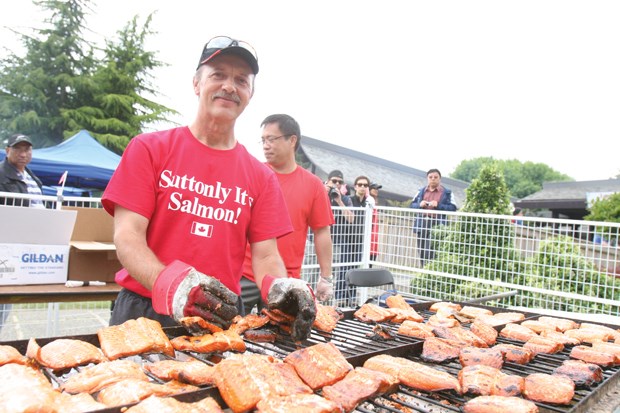Canada Day is a date on the calendar when celebrations across the country focus on what it means to be Canadian, a nation that prides itself on its multicultural heritage.
In Steveston, home of the Salmon Festival for close to seven decades, there is a unique aspect of those festivities — the opportunity to showcase the historical links the fishing village has with the Japanese community.
It’s an undertaking done with much pride, said Kelvin Higo, who, along with his wife Kay, co-chairs the Japanese Cultural Show at the Steveston Japanese Canadian Cultural Centre on the grounds of the Steveston Community Centre.
“We’ve had a long tradition of cooperation and participation between the Japanese community and the general community,” Higo said. “And it’s really a hallmark and example of the Canadian mosaic.
“To me, it’s a microcosm of that in Canada. Rather than be isolated, like some communities are from mainstream Canada, the Japanese community here has been present.”
At one point, that segment of society represented the majority in Steveston, Higo said.
“There’s all this angst right now about the influx of Chinese recently, but if you go back to the early 1900s, Steveston was mostly made up of Japanese immigrants,” he said. “And in 1942, about 2,200 Japanese left the community when they were interned, leaving it almost like a ghost town with about 500 Caucasian and First Nation left people behind.”
While that left a black mark on the community, it also helped lay the groundwork for a new beginning and resurgence in the Japanese-Canadian identity in Steveston.
“When they (Japanese-Canadians) came back, they started rebuilding their lives and to their credit, and I’m always amazed at this, a relative few years (later) the president of B.C. Packers, Ken Fraser, came to the (Japanese) elders with the offer of working together to build the Steveston Community Centre.”
Higo said it was the foresight of the elders at the time to see what would be a lasting benefit to their children, so an agreement was struck.
“In retrospect, I’m thinking this was just five years after all our civil rights were taken away,” Higo said. “Would I have been a big enough man to have forgiven that easily? It astounds me that those people made these kinds of difficult decisions of deciding to build a better future together and move forward.”
And from that stemmed Steveston’s Martial Arts Centre and Japanese Canadian Cultural Centre.“I tell people that the footprints of the Japanese-Canadians are throughout this community,” Higo said, “from Kuno Gardens to Murokami House, to the martial arts centre and Japanese hospital.”
zSee page B13 for a list of Japanese Cultural events



